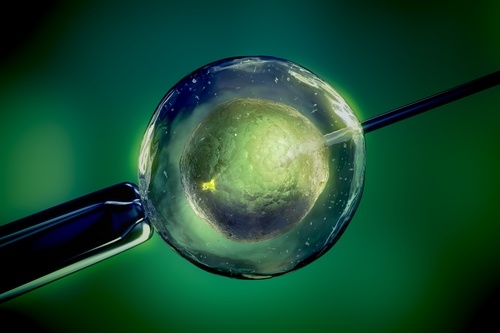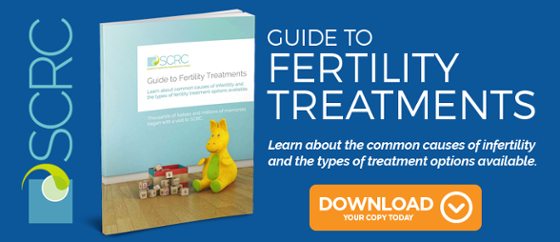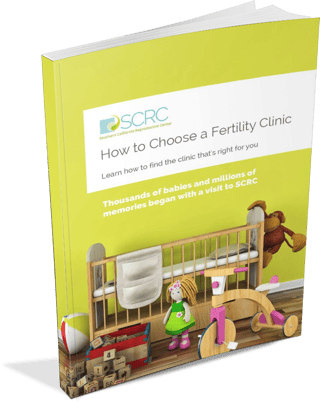
When you first step foot on the path to in vitro fertilization (IVF), the road ahead may seem very uncertain. You know your goal: a healthy baby, but knowing what to expect on the journey from here to there is a lot harder. While every case is unique, and it is impossible to predict exactly how your cycle will go, we can sketch out a basic timeline and tell you about the most important landmarks along the way. In order to understand what you will be experiencing throughout the IVF process, it is important to have a good grasp on what IVF actually is and how it works.
A brief introduction to IVF
In vitro fertilization is a latin phrase that means “in glass.” The human body is magnificent but unpredictable. Even with the most sophisticated imaging technology in the world, it is not easy to see what is happening on the inside. When a woman is struggling to conceive, IVF is often the most effective ways to help, whether or not we know what is causing her infertility. IVF allows us to create a controlled environment that significantly enhances the opportunity for fertilization of the egg.
In IVF, sperm and egg are combined in a laboratory dish—this is the “glass” in the name—incubated, and carefully monitored throughout the fertilization process. Over the course of 3 to 5 days, successfully fertilized eggs develop into embryos. Then the embryo quality is examined for transfer, freezing, or further culturing and development.
For the woman, however, the IVF process actually starts weeks earlier. IVF is not a single treatment but a series of procedures. An average IVF cycle takes about 6 to 8 weeks from consultation to transfer, but depending on the specific circumstances of each the path is similar for every patient. What varies is how your body responds at each stage.
Our IVF specialist, Dr. Mark Surrey MD, explains how the in vitro fertilization process has developed over the years and how they use the process to give patients the best results in this video.
Week 1: first visits and consultations
Sometimes the biggest hurdle is just getting yourself into the office. After all the dreaming, discussions, worrying, thinking and planning, you are as ready as you will ever be. Seeking fertility treatment is a courageous step, and it usually comes with hundreds of questions. This first stage is your opportunity to start finding some real answers.
- Initial consultation: In this first meeting, the clinic will obtain an extensive medical history from you and your partner, and try to answer any questions or concerns you might have at this stage. Do not be afraid to come with a long list; it is vital that you feel well-informed and comfortable before you commit to treatment.
- Clinical coordinator consultation: At this appointment, we will review your diagnosis and the details of your desired treatment plan. This is where much of the nitty gritty planning is done. You will learn how to self-administer the medications used in an IVF cycle, and schedule key procedures.
- Financial consultation for IVF: Getting good financial counseling and advice is one way to help minimize some stress. At this consultation you will review your options for insurance coverage. If IVF is not covered, there are many other flexible options to explore, including IVF financing.
Week 2-4: preparation begins
This is where everything really starts.
- Pretreatment preparation for IVF: Comprehensive lab tests give a clearer picture of your fertility, so that your fertility experts can offer you an individualized IVF protocol. Common pre-IVF testing includes:
- A blood panel
- Ultrasounds
- Infectious disease screening
- Uterine evaluation
- Male fertility testing, including a sperm analysis
- Start birth control pills: The next step is to regulate your menstrual cycle and prepare your ovaries. You can expect to take birth control pills for 2 to 4 weeks after testing and diagnosis, depending on the length of your cycle.
Week 5: medication and monitoring
Once you come off of the birth control pill, you will begin a process known as Controlled Ovarian Hyperstimulation (COH). At the clinic you will have an ultrasound to evaluate the uterus and ovaries, and once you get the all clear you can start. There are two main parts to the COH process.
- Take fertility medications (for about two weeks): Oral fertility medications like Clomid and/or injectable follicle stimulation hormones (Follistim and Gonal-F) are used to stimulate the follicles in your ovaries to mature more eggs than they typically would in a normal cycle. The goal is to produce at least 4 eggs with the use of fertility medication.
- Monitoring visits (during the fertility medication phase): Ultrasounds and blood tests are used during this time to keep a close eye on the development of your follicles and eggs. This is the most time-consuming part of the IVF process, requiring an average 5-7 office visits.
Week 7: triggering, egg retrieval, and fertilization
After about 10-12 days of fertility medication, once monitoring shows that your follicles have grown to an appropriate size, it is time to trigger the final maturation of the eggs with hCG and schedule the ultrasound egg retrieval 36 hours later.
- Egg retrieval: This is a day procedure performed in the clinic under sedation. There is minimal risk, but you will want to take the day off work and arrange for someone to pick you up. If you are going through IVF with a partner who will be providing a semen specimen, it will be collected on the same day as your egg retrieval or the sperm could be frozen before.
- Egg and sperm are combined in the lab: If all goes well, fertilization occurs and embryos are created. There are several options that can be used at this stage to try to increase the chances of a successful pregnancy.
- Intracytoplasmic sperm injection (ICSI) is a good option when male infertility is a factor. In this procedure a single healthy sperm is injected directly into an egg.
- Assisted hatching is a procedure where a tiny hole is made in an embryo’s outer membrane (the zona pellucida) to try to increase the rate of implantation after transfer.
- Preimplantation genetic screening (PGS) or diagnosis (PGD) can help to ensure that only healthy embryos are transferred. As genetic abnormality is a leading cause of miscarriage, this testing is often helpful in cases of recurrent pregnancy loss.
- Within 3-6 days after fertilization, embryos are evaluated for transfer: Daily monitoring helps experts decide which embryos have the best chance of surviving transfer, and IVF Lab Daily Reports keep you informed of their progress.
- Embryo or blastocyst transfer: Approximately 3 days after fertilization, embryos are ready for transfer, but some patients prefer to wait a few days until they have reached the blastocyst stage (generally 5 days after fertilization). The embryo or blastocyst is instilled into the uterus via a thin, flexible plastic tube, which is gently passed through the opening in the cervix leading to the interior of the uterus. You will not need sedation for this procedure. It is generally painless but some women may experience mild cramping. You can watch the transfer as it happens with ultrasound technology.
After IVF
After the transfer, you will take a progesterone supplement to help support the uterine lining and encourage implantation.
- Pregnancy test #1: Approximately 12 days after the embryo/blastocyst transfer, you will take your first pregnancy test in the clinic. If it is positive, we will schedule you for Pregnancy Test #2.
- Pregnancy test #2: This repeat test is done within one week of the first positive test. If it is positive, we will schedule you for an ultrasound after 2-3 weeks, and then you can transfer your care to an OB GYN.
If you’d like to set up a consultation with one of our Los Angeles IVF specialists, give us a call today.
Share this on social media:





